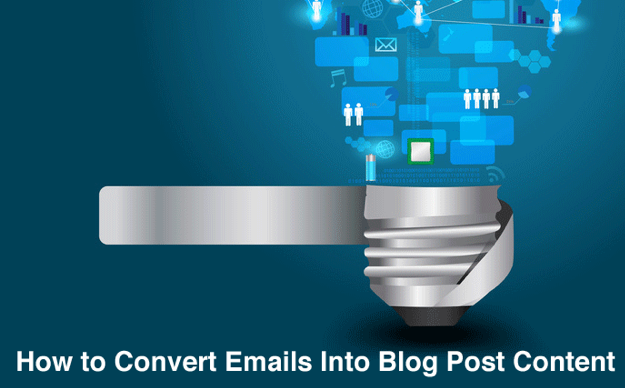
8 simple tips to leverage email for your blog
Target audience: Nonprofits, cause organizations, foundations, NGOs, social enterprises, small businesses, general public.
 So you’ve finally decided to start blogging for your nonprofit.
So you’ve finally decided to start blogging for your nonprofit.
You’ve done the research about different blogging platforms, and had even outlined a strategy for topics that are based on what your supporters want and how people search for you on Google.
But you’ve got one small problem: Who’s going to write all of these blog posts?
This is a question most nonprofits have when starting a blog, so you’re not alone.
The good news is that, hidden within in the thousands of emails you’ve sent over the past few years, exists fodder rich in blogging nutrients.
Blogging fodder in your sent folder
If you go back to your blog strategy, you realize that your main objective for blogging is to answer the most common questions in ways that are very specific and useful. The more specific the question, the more useful the answer will be, which means more readers and higher rankings in search.
Chances are you’ve already answered these questions over and over and over again in email.
Here are eight steps to converting these emails into blog posts:
Select your fodder
1Find the emails that contain answers that would be useful to anyone, and not just the recipient. For example an email answering a question from a breast cancer patient about what to eat during chemotherapy.
Write the title
2Writing the title first helps you focus on the specific topic throughout the writing process. You’re not locked into it, but it gives you a starting point.
Carve out the leftovers
3You might realize that more than one blog post resides within a given email. If this is the case, simply save the rest of the email for another blog post.
Trim the fat
4Cut the flab. A good target is to cut down the word count down by 50 percent. You can do this.
Add subheadings
5For the most part, people scan the Web – they don’t read it. Make sure you break up your blog posts with subheadings every two paragraphs (as in this example).
Add an image
6I’ve done a lot of A/B testing around images at the top of blog posts, and have generally found that images help readers stick around longer. Find an image that captures the essence of your article and place it just under the title. They’ll also make your post more sharable.
Optimize your meta-tags
7A title tag is the main title of a webpage that search engines index. It’s visible in the title bar of a browser and in the headings of search engine results (as shown below).
Get another pair of eyes
8Have a friend or another staff member read your blog post and ask them what to cut or add. Time how long it takes for them to read your post.
Done beats perfect
At some point, you will need to hit the Publish button. Don’t go for perfect. Perfect never gets done. Instead get your blog post to about 70 percent of where you want it. In other words, get it to where it’s a little better than “good enough.” Then hit publish.
What do you think?
John Haydon delivers social web strategy solutions for “the quick, the smart, and the slightly manic.” Curious? Then visit the John Haydon blog, follow him on Twitter or leave a comment.
 This work is licensed under a Creative Commons Attribution-NonCommercial 3.0 Unported.
This work is licensed under a Creative Commons Attribution-NonCommercial 3.0 Unported.









